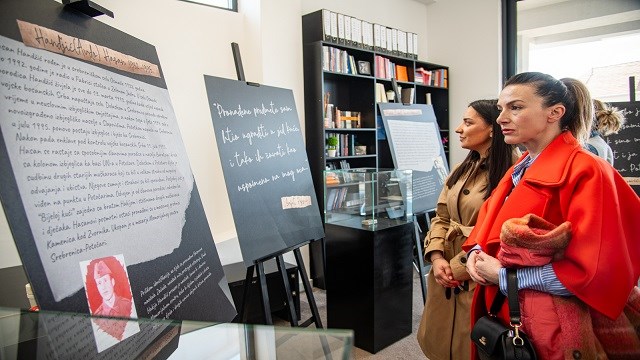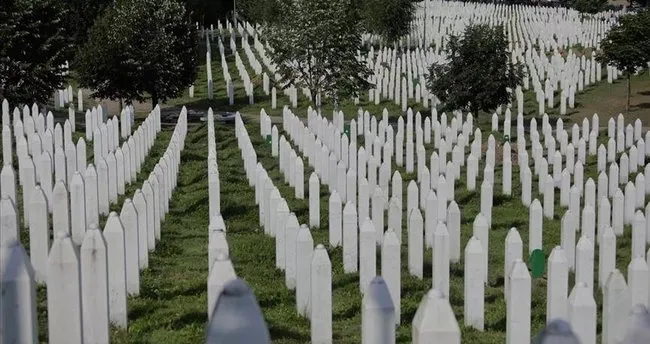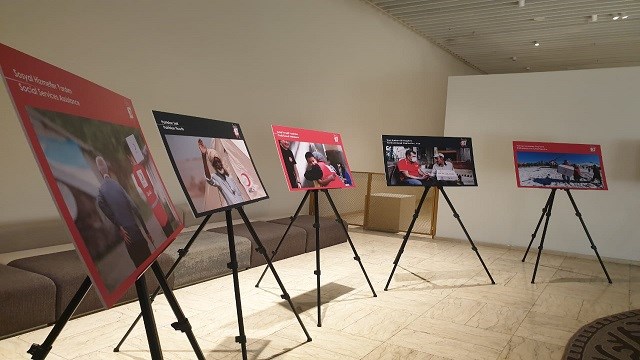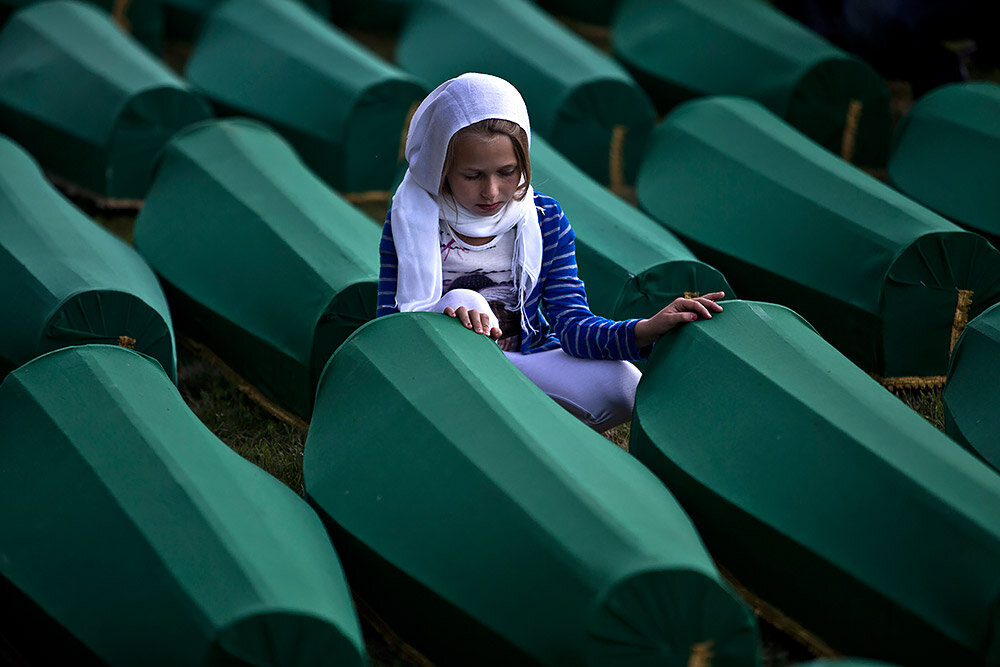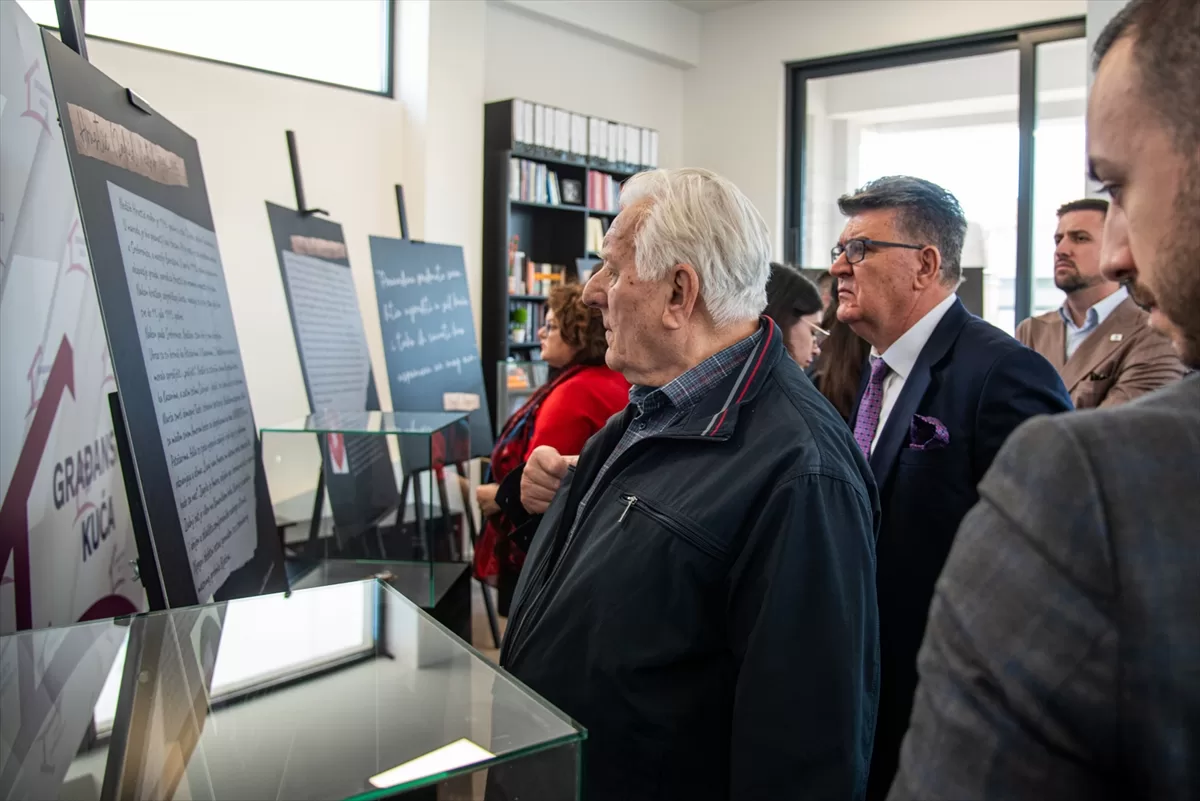
The exhibition "Stories from Srebrenica" has opened in Montenegro.
The exhibition "Stories from Srebrenica" has opened in Montenegro.
An exhibition of photographs and videos telling about those who died during the genocide in Srebrenica in Bosnia and Herzegovina during the 1992-1995 war has opened in the capital of Montenegro, Podgorica.
The exhibition, organized by the Potocari Memorial Center and opened in the capital's Information and Documentation Center under the title "Stories from Srebrenica", includes personal belongings of those killed during the genocide, as well as written memoirs of surviving witnesses.
Speaking at the opening, the Ambassador of Bosnia and Herzegovina in Podgorica, Branimir Jukic, thanked the Government of Montenegro for supporting the culture of preserving the memory of the victims of the war.
Ambassador Jukic said that Montenegro was one of the first countries to adopt a resolution of the European Parliament (EP), in which the events in Srebrenica were called genocide.
Akhmo Mehmedovich, who runs the Potocari Memorial Center in Srebrenica, said that they would like to hold an exhibition in different countries and cities, and said: "When you look at one of the stories here, you will see that there are at least 8 thousand such stories in Srebrenica. "They remind us of what the horrors of war can do to ordinary people."
Milan Radovic, director of the Civic Alliance program, said that the memory of what happened in Srebrenica gives them the duty to build a better future.
What happened in Srebrenica?
It is a city located in the east of Bosnia and Herzegovina, within the Republika Srpska, on the border of Bosnia and Herzegovina and Serbia.
How many people died during the Srebrenica massacre?
The Srebrenica Massacre or Srebrenica Genocide is the name given to the killing of at least 8,372 Bosniaks by the heavily armed Serbian army under the command of General Ratko Mladic in Srebrenica, Bosnia and Herzegovina, in July 1995 during Operation Krivaya '95 against Srebrenica during the Yugoslav Civil War (Croatian War and Bosnian War the war).
It is documented that women and young children were killed during the massacre. In addition to the Republika Srpska army, Serbian private security forces known as "Scorpions" also participated in the massacre. Despite the fact that the United Nations declared Srebrenica a safe zone, the presence of 400 armed Dutch peacekeepers could not prevent the massacre.
What is the genocide in Srebrenica?
Srebrenica was among the 6 regions declared security zones by the United Nations, which forcibly invaded the region after the genocide started by Serbs in Bosnia in 1992 after the breakup of Yugoslavia.
The population of the city, which was about 24 thousand people before the war, reached about 60 thousand, taking into account the migration of refugees from other regions. Now Srebrenica has turned into a "concentration camp" fighting "hunger" and "diseases". The weapons in the hands of Muslims were collected by the UN peacekeeping forces for protection.
During the Bosnian War, Srebrenica, declared a "security zone" by the UN, was occupied by military units under the command of Serbian General Ratko Mladic on July 11, 1995. After the start of the massacre of civilians, Bosniaks who were trying to escape from the massacre along a forest road known as the "road of death" tried to escape by reaching the town of Tuzla, located 110 kilometers away. While many civilians were captured and killed by Serbian soldiers on the way, few of those who escaped from Srebrenica reached Tuzla safely.
When the Serbs, under the command of Ratko Mladic, intensified their attacks on Srebrenica, the request of the Muslims to return the weapons they had captured was rejected by the Dutch commander Tom Carremans. The UN allowed only two F-16s to fly over the city.
Dutch soldiers evacuated the city in the middle of the night on the orders of the Dutch general, commander of the UN peacekeeping force in Bosnia. During the war, the Dutch commander Tom Carremans, who was responsible for the security of the city, handed over the city to the Serbs and 25 thousand refugees who found refuge in it.
Later, a video surfaced showing a Serbian general handing a gift to a Dutch commander who had evacuated the city. The week-long massacre was recorded in the archives as the largest crime against humanity since the Second World War.
On June 27, 2017, 15 years after the massacre, a Dutch court found Dutch soldiers guilty of the Srebrenica massacre, ruling that Dutch soldiers acted illegally and that the Netherlands was partly to blame. The court ruled that the Dutch government was responsible for 30% of the deaths in Srebrenica.
The Hague court recognized the week-long massacre as "genocide", but ruled that Serbia would not be held responsible.
Who is wanted during the genocide in Srebrenica?
On July 11, 1995, Ratko Mladic easily entered the demilitarized city. Serbian soldiers then killed Bosnian Muslims and Bosnian Croats on the roads and in the mountains. Serbian soldiers dismembered the bodies and buried them in mass graves of up to 64 people so that the bodies could not be identified.
This is a list of Serbian high-ranking officers and politicians wanted, tried and convicted by the International War Crimes Tribunal for the Srebrenica genocide.
- Momchilo Kraishnik
- Bilyana Plavshich
- Ratko Mladic
- Zdravko Tolimir
- Radovan Karadzic
In Srebrenica, in eastern Bosnia and Herzegovina, the coffins of 30 victims of the 1995 genocide, wrapped in green cloth, were moved to the Potocari Memorial Cemetery, where they will be buried.
